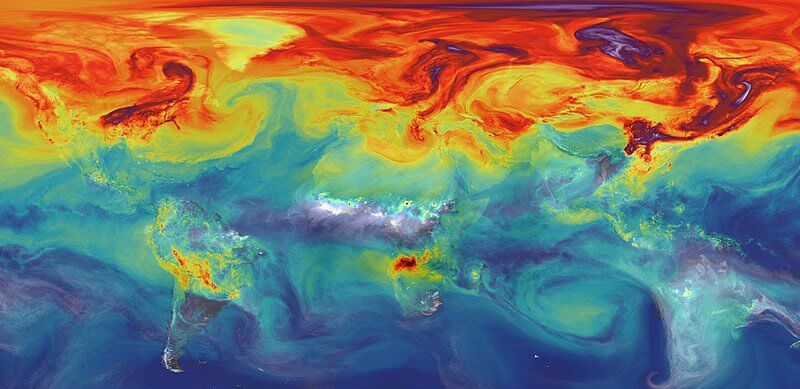The Earth’s atmosphere, a complex tapestry of wind and turbulence, has long been the subject of intense scientific scrutiny. From the daily weather forecasts that guide our lives to the intricate research into the movement of air, the study of atmospheric dynamics is a dizzying pursuit. Now, a team of researchers has made a remarkable discovery that bridges the gap between the lower atmosphere and the thermosphere, the gateway to space.
In a paper published in Geophysical Research Letters, Professor Huixin Liu of Kyushu University’s Faculty of Science and her collaborator, Dr. Facundo L. Poblet of Leibniz Institute of Atmospheric Physics at the University of Rostock, have revealed that the turbulence in the thermosphere exhibits the same physical laws as the wind in the lower atmosphere. Moreover, they found that wind in the thermosphere predominantly rotates in a cyclonic direction, counterclockwise in the Northern Hemisphere and clockwise in the Southern Hemisphere.
Unraveling the Interplay of Kinetic Energy in the Atmosphere
“At the fundamental level, we study the interplay of kinetic energy in the atmosphere at different sizes and scales, that energy is mostly in the form of wind and turbulence,” explains Professor Liu. “Over the decades, a massive amount of data has given us insight into how this energy flows and dissipates to affect the weather in the troposphere, the lowest layer of the atmosphere. My research focuses on the movements in the upper atmosphere, specifically the thermosphere, where we explore the corresponding laws governing the dynamics and energy flow in the region.”
The thermosphere, a section of the atmosphere roughly 80-550 km above sea level, is a critical region for space operation. It is home to the International Space Station and most satellites, and it is where auroras are formed. Liu collaborated with Poblet, whose work focuses on the dynamics and turbulence in the lower atmosphere below an altitude of 100 km, to apply his meteorological methods to her research domain.
Uncovering Similarities in Turbulence Across Atmospheric Layers
The team analyzed thermosphere wind data from two satellites, the Challenging Minisatellite Payload (CHAMP) and the Gravity Field and Steady State Ocean Circulation Explorer (GOCE). By calculating the third-order structure function of the wind, a statistical quantity that provides information on the underlying turbulence, they made an astonishing discovery: the thermosphere exhibits a similar scaling law to that of the lower atmosphere.
“This means that both the thermosphere and the troposphere—despite having drastically different atmospheric compositions and dynamics—follow the same physical laws. How turbulence moves, forms, and dissipates in these two regions are very similar,” continues Liu.
Despite remarkable strides in understanding the thermosphere, the intricate interplay of turbulence has remained largely elusive. The team’s findings shed new light on this underexplored aspect of near-space dynamics, offering a unified principle for the Earth’s varied environmental systems.
“Similar to atmospheric weather forecasting, comprehending the energy distributions in the thermosphere is vital to advance our understanding of space dynamics,” concludes Liu. “We hope these findings can be used to improve space weather forecasting and ensuring the continued functionality and safety of satellite-based technologies essential to everyday life.”
The researchers’ groundbreaking work not only deepens our understanding of the Earth’s atmospheric dynamics but also has the potential to revolutionize the way we predict both earth and space weather. As we continue to explore the mysteries of our planet and the space that surrounds it, discoveries like these serve as a reminder of the interconnectedness of our world and the importance of scientific inquiry in unraveling its secrets.
If our reporting has informed or inspired you, please consider making a donation. Every contribution, no matter the size, empowers us to continue delivering accurate, engaging, and trustworthy science and medical news. Independent journalism requires time, effort, and resources—your support ensures we can keep uncovering the stories that matter most to you.
Join us in making knowledge accessible and impactful. Thank you for standing with us!

